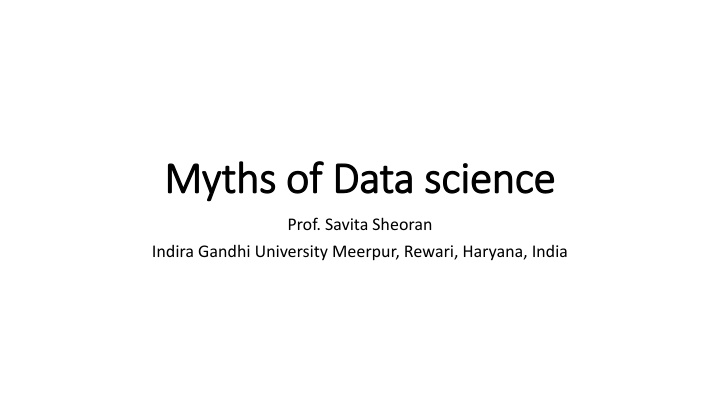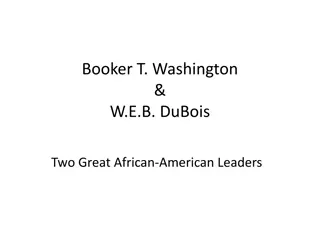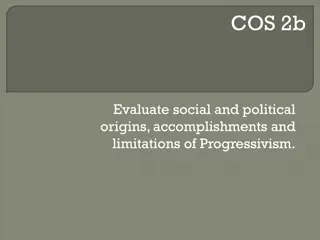Introduction and Development of African American Studies: Beginnings and Philosophers
This content delves into the origins and evolution of African American Studies, highlighting key figures such as David Walker, Sojourner Truth, Maria Stewart, Henry Highland Garnet, and Frederick Douglass. It explores the purpose, scope, and objectives of African American Studies, shedding light on the challenges and movements within the educational landscape and society.
Download Presentation

Please find below an Image/Link to download the presentation.
The content on the website is provided AS IS for your information and personal use only. It may not be sold, licensed, or shared on other websites without obtaining consent from the author.If you encounter any issues during the download, it is possible that the publisher has removed the file from their server.
You are allowed to download the files provided on this website for personal or commercial use, subject to the condition that they are used lawfully. All files are the property of their respective owners.
The content on the website is provided AS IS for your information and personal use only. It may not be sold, licensed, or shared on other websites without obtaining consent from the author.
E N D
Presentation Transcript
Myths of Data science Myths of Data science Prof. Savita Sheoran Indira Gandhi University Meerpur, Rewari, Haryana, India
Myths of Data science Myths of Data science Data science is a powerful and evolving field, but there are many myths and misconceptions surrounding it. Here are some of the most common myths about data science: 1. Data Science Is All About AI and Machine Learning Many believe data science is solely focused on artificial intelligence (AI) and machine learning (ML). While these are important aspects, data science also involves data wrangling, visualization, statistical analysis, and domain expertise. Example: Imagine an e-commerce company wants to analyze customer buying behavior. They don t necessarily need AI; simple statistical methods, data visualization, and trend analysis can provide valuable insights without using machine learning. 2. More Data Means Better Models While having more data can improve model accuracy, it doesn t guarantee better insights. Poor- quality, biased, or irrelevant data can lead to inaccurate models. Data cleaning and feature engineering are just as crucial as model selection. Example: A hospital collects patient data to predict disease outbreaks. If the data contains incorrect or irrelevant information (e.g., duplicate records or missing values), having more of it won t improve predictions. Instead, cleaning and selecting the right data matters more.
Myths of Data science Myths of Data science 3. Data Science Is Just About Building Models Many people think a data scientist s main job is to build predictive models. However, data scientists spend most of their time collecting, cleaning, and analyzing data to extract meaningful insights before even building a model. Example: A bank wants to detect fraudulent transactions. A data scientist spends weeks gathering data from various sources, cleaning it, and analyzing patterns before even building a model. The model-building phase is just a small part of the overall process. 4. Data Science Will Replace Human Decision-Making AI and machine learning can assist in decision-making, but they cannot replace human intuition, ethics, and domain expertise. Humans are still required to interpret results, ensure fairness, and provide context. Example: Self-driving cars rely on AI for navigation, but human oversight is still required. AI models can fail in unexpected situations, such as unusual weather conditions or ethical dilemmas (e.g., whether to swerve to avoid a pedestrian or stay in lane).
Cont.. 5. You Need a Ph.D. to Be a Data Scientist While advanced degrees can help, they are not a strict requirement. Many data scientists come from diverse backgrounds, including engineering, business, and even social sciences. Practical experience and problem- solving skills are often more valuable. Example: Many successful data scientists, like those working at startups, come from diverse backgrounds. Some learn through online courses, bootcamps, and hands-on experience rather than formal Ph.D. education. 6. Deep Learning Is Necessary for Every Problem Deep learning is powerful but is not always the best choice. Many problems can be solved using simpler techniques like regression, decision trees, or statistical methods, which are easier to interpret and require fewer resources. Example: A company wants to forecast sales for the next quarter. Instead of using deep learning, which requires large computational resources, a simple regression model or time series analysis (like ARIMA) can provide accurate results with less complexity. 7. Data Science Is Fully Automated Many think data science tools can automate everything. While automation exists, human expertise is needed to define the problem, preprocess data, fine-tune models, and interpret results correctly. Example: A social media platform wants to detect hate speech. Even though AI can flag potentially harmful content, human moderators are still needed to review and make final decisions since AI might misinterpret sarcasm or cultural context.
Cont.. 8. All Data Science Projects Lead to Useful Insights Not every data science project yields valuable or actionable insights. Sometimes, the data may be insufficient, the problem may not be well-defined, or the analysis may not uncover meaningful patterns. Example: A retail store analyzes customer foot traffic to optimize store layout. After months of data collection, they find no clear pattern linking layout changes to sales. Not all data science efforts yield actionable results. 9. More Features Always Improve Model Performance Adding more features can sometimes improve a model, but it can also introduce noise and reduce performance. Feature selection and engineering are crucial steps to avoid overfitting and improve model generalization. Example: A sports analytics company builds a model to predict player performance. Adding unnecessary features (e.g., a player's favorite food or jersey number) could make the model more complex without improving accuracy, leading to overfitting.
Cont.. 10. Data Science Is Only for Large Companies While big companies leverage data science extensively, small and medium-sized businesses can also benefit from data-driven insights. Even startups use data science for customer analysis, marketing strategies, and business optimization. Example: A small restaurant uses data science to analyze customer preferences and optimize its menu. By using simple analytics on past orders, they can remove unpopular dishes and focus on best-selling items, increasing profitability.























